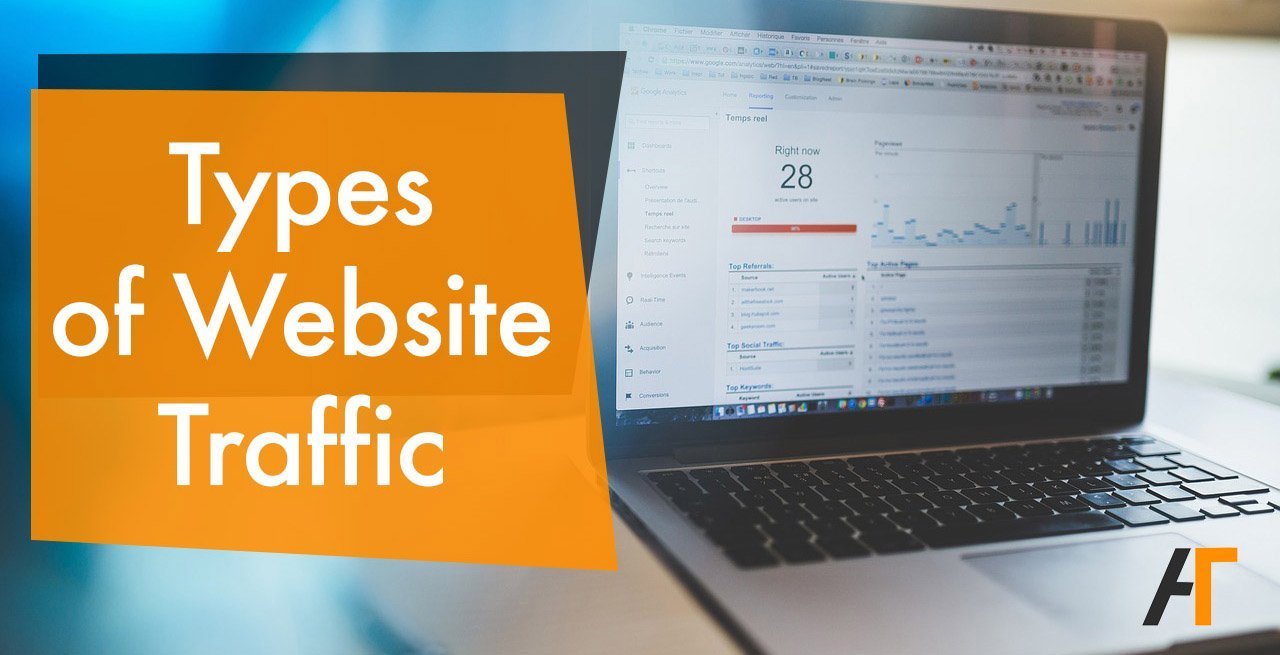The Various Forms Of Website Traffic
In the actual world, traffic moves through the air,the land the sea, and, for the purists among you, occasionally, space.
However, a lot of really inadequate metaphors are used to depict the Internet. The information superhighway is it! It is a group of tubes!
Fortunately, while our descriptions of website traffic may be inadequate in comparison to the Internet's architecture, they do not. They are quite particular. Certain traffic kinds work better for particular objectives than others. Before we discuss the functions they perform, let's first look at the different sorts of website traffic.
The 5 Different Kinds of Website Traffic
There are, in general, 5 categories of website traffic. As follows:
- Direct
- Organic
- Paid
- Referral
- Social
Let's examine how each of these traffic categories looks and what each one is useful for.
Direct traffic
All website traffic from visitors who went straight to your URL is referred to as direct traffic.
This kind of traffic is actually rather uncommon. The majority of website traffic in the past was direct; this is no longer the case in the age of search engines. The majority of us use Google Chrome, and it is frequently quicker to type in a few letters of the website's URL than it is to type out the entire thing.
This implies that a significant portion of the direct traffic you will receive will originate from users whose address bars automatically fill in your URL. This indicates that direct traffic is often generated by your supporters, or individuals who adore and frequently visit your website. Additionally, big businesses like Google and Amazon may anticipate a lot of direct traffic.
In other words, direct traffic is generated by customers who are already familiar with your business and typically have expectations in mind. Although this is not the acquisition stage of your funnel, high levels of direct traffic can indicate high levels of brand loyalty.
Organic traffic
Unpaid search results, largely from Google, provide organic traffic. The majority of your website's new (and repeat) customers will come from organic traffic. According to a 2019 BrightEdge study, 53% of web traffic is organic.
This implies that over half of your potential online traffic is lost if your website does not rank effectively in search engines. If you want to expand your business, organic traffic is extremely necessary, and SEO is the only technique to increase organic traffic.
The main goal of search engine optimization (SEO) is to improve your website for both people and Googlebot. This include adding more pertinent material, making the website easier to use, and connecting with other websites that your users may find interesting.
PPC traffic
Any traffic you receive from ad networks is known as pay-per-click (PPC) traffic. This might be Facebook Ads, Google Ads, or another ad network.
PPC traffic is beneficial; in fact, around 15% of all website traffic comes from sponsored search, according to the same BrightEdge survey. PPC is also quite simple to monitor; you'll always be aware of your expenses, the value of your investment, and your return on investment.
Referral traffic
Any traffic that originates from sources other than social media or search engines is referred traffic. A lot of referral traffic indicates that other websites are linking to yours, which can be a very positive development. In order to establish your ranking, Google takes into account the quantity (and calibre) of links you receive. That implies that high referral traffic levels can result in increased organic traffic.
You should use caution, though, as not all referral traffic is beneficial. Your search engine rating may suffer if referral traffic comes from spammy sources, which may result in receiving less organic visitors.
Increasing referral traffic is similar to increasing word-of-mouth advertising. Good websites are more likely to link to yours if you have a good product, a good website, and you work to develop positive relationships with your neighbourhood.
Social media traffic
The easiest to understand is this. Sharing links to your website on social media can bring in new followers. You can anticipate that a large portion of this traffic will originate from your own pages if your social media presence is established.
The two most frequent forms of traffic are direct and search (paid and organic), with social media traffic coming in at number three. While it's advisable to concentrate on search traffic for the majority of categories, companies who can provide eye-catching pictures typically perform well on social media.
Other Types of Website Traffic
There are many kinds of traffic than the Big 5 we've described here: Emails might assist you drive traffic if your email list includes some avid readers. A certain kind of referral traffic is also something you can acquire via affiliate marketing, but if your company isn't Amazon, that traffic generally won't be particularly useful to you.
A Canadian SEO company is called First Rank. In other words, we assist your company in obtaining organic traffic, which is the sort of traffic we value the most. Other sorts of traffic can benefit from an increase in organic traffic. Need to know more? Please contact us!


No comments